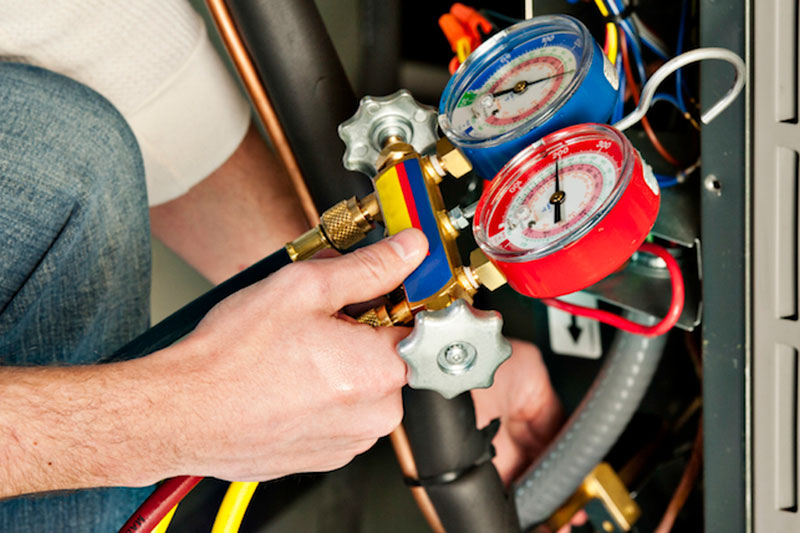
You might not think much about how your air conditioner functions, but it depends on refrigerant to keep your house fresh. This refrigerant is subject to environmental rules, because of the chemicals it contains.
Depending on when your air conditioner was put in, it may need R-22, R-410A or R-32 refrigerant. We’ll discuss the differences and which air conditioner refrigerants are being phased out in West Columbia, in addition to how these phaseouts have on influence on you.
What’s R-22 and Why Is It Discontinued?
If your air conditioner was installed before 2010, it possibly uses Freon®. You can discover if your air conditioner has it by calling us at 803-265-4208. You can also look at the name plate on your air conditioner condenser, which is located outside your residence. This sticker will include info on what kind of refrigerant your AC needs.
Freon, which is also known as R-22, includes chlorine. Scientists consider R-22 to be bad for the earth’s ozone layer and one that leads to global warming. The Environmental Protection Agency, which controls refrigerants in the United States, outlawed its production and import in January 2020.
I Have a R-22 Air Conditioner. Should I Replace It?
It varies. If your air conditioning is cooling properly, you can continue to keep it. With yearly air conditioner maintenance, you can expect your air conditioning to work around 15–20 years. However, the Department of Energy notes that substituting a 10-year-old air conditioner could save you 20–40% on yearly cooling bills!
If you don’t get a new air conditioner, it might create an issue if you need air conditioning repair later on, specifically for refrigerant. Repairs may be more expensive, since only reduced amounts of recycled and reclaimed R-22 is available.
With the phaseout of R-22, a lot of new air conditioners now use Puron®. Also referred to as R-410A, this refrigerant was made to keep the ozone layer healthy. As it calls for a different pressure level, it doesn’t match air conditioners that need R-22 for cooling.
However, Puron still has the possibility to create global warming. Because of that, it might also sometime be discontinued. Although it hasn’t been communicated yet for residential air conditioners, it’s anticipated sometime this decade.
What Refrigerant Will Take Over R-410A?
In preparation of the end, some companies have initiated using R-32 in new air conditioners. This refrigerant rates low for global warming potential—about one-third less than R-410A. And it also decreases energy expenditure by approximately 10%, according to the Intergovernmental Panel on Climate Change’s Fourth Assessment Report. That’s savings that could be forwarded on to you through your energy bills.
Tri City Fuel & Heating Can Assist with All Your Air Conditioning Needs
In brief, the modifications to air conditioner refrigerant probably won’t impact you very much until you need repairs. But as we discussed previously, repairs connected to refrigerant may be pricier due to the reduced levels that are accessible.
Aside from that, your air conditioner usually breaks down at the worst time, typically on the muggiest day when we’re receiving many other requests for AC repair.
If your air conditioner relies on a discontinued refrigerant or is aging, we recommend installing a new, energy-efficient air conditioner. This ensures a hassle-free summer and might even decrease your cooling expenses, especially if you choose an ENERGY STAR®-rated system. Plus, Tri City Fuel & Heating has many financing solutions to make your new air conditioner work with your budget. Contact us at 803-265-4208 to start today with a free estimate.



